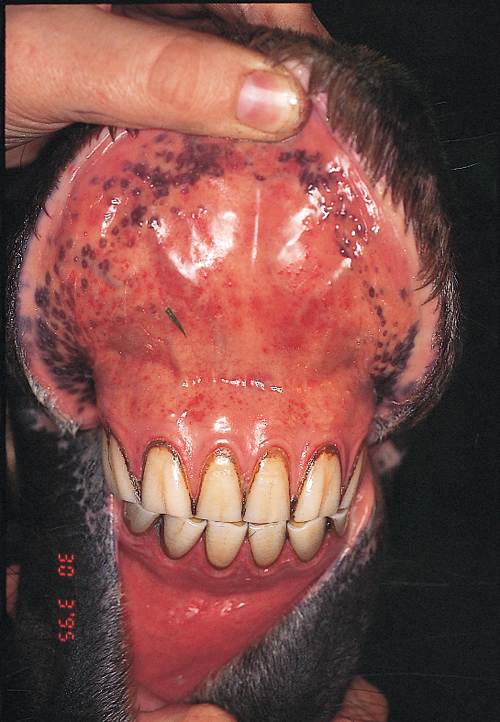Equine Internal Medicine Q&A 20
| This question was provided by Manson Publishing as part of the OVAL Project. See more Equine Internal Medicine questions |
An eight-year-old gelding is presented with acute colic, abdominal distension, trembling, sweating, tachycardia (heart rate 76bpm) and tachypnoea (respiratory rate 32bpm). The horse had accidentally eaten a large quantity of grain several hours earlier. The mucous membranes are bright red with petechial haemorrhages. Intestinal sounds are absent, and percussion of the abdomen results in high-pitched pings. Colonic distension with tight bands are palpated per rectum. Haematology reveals haemoconcentration (PCV, 0.68l/l), neutropenia (PMN count, 3.7x109/l) with toxic changes in the neutrophils.
| Question | Answer | Article | |
| What is the diagnosis and pathogenesis? | Grain overload. Grain engorgement results in rapid fermentation and the production of large amounts of lactic acid, volatile fatty acids and gas in the gastrointestinal tract, leading to gastrointestinal atony and distension. The severe acidosis results in massive endotoxaemia and subsequent circulatory failure (shock). The presence of petechial haemorrhages is suggestive of disseminated intravascular coagulation. |
[[|Link to Article]] | |
| How would you treat this horse? |
|
[[|Link to Article]] | |
| What is the prognosis? | The prognosis for horses with severe clinical signs such as this is poor. The prognosis is particularly poor in cases with severe abdominal pain and abdominal distension, and horses which develop early signs of laminitis. |
Link to Article | |
